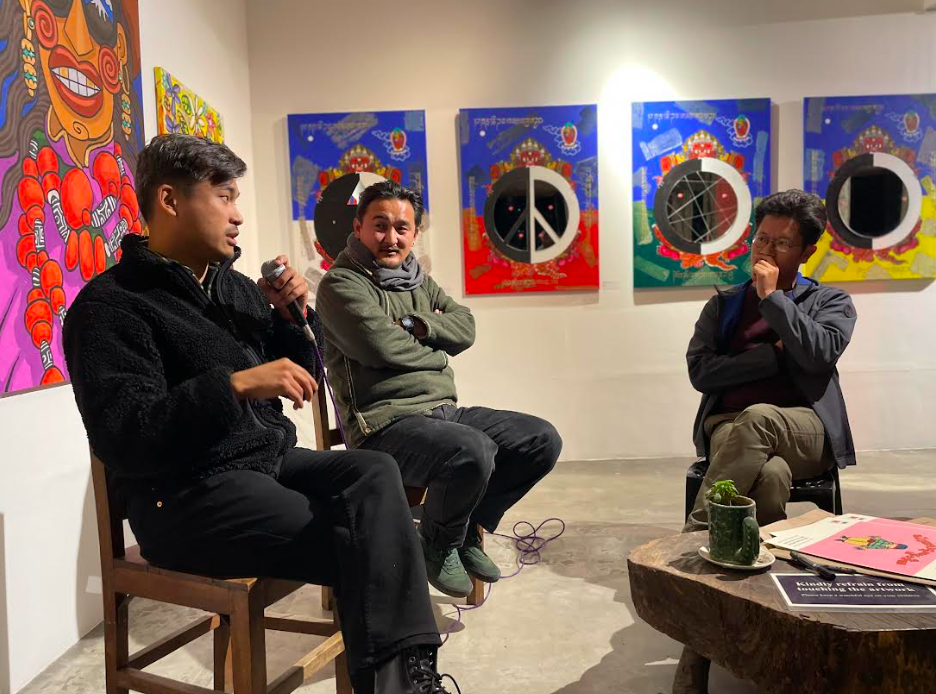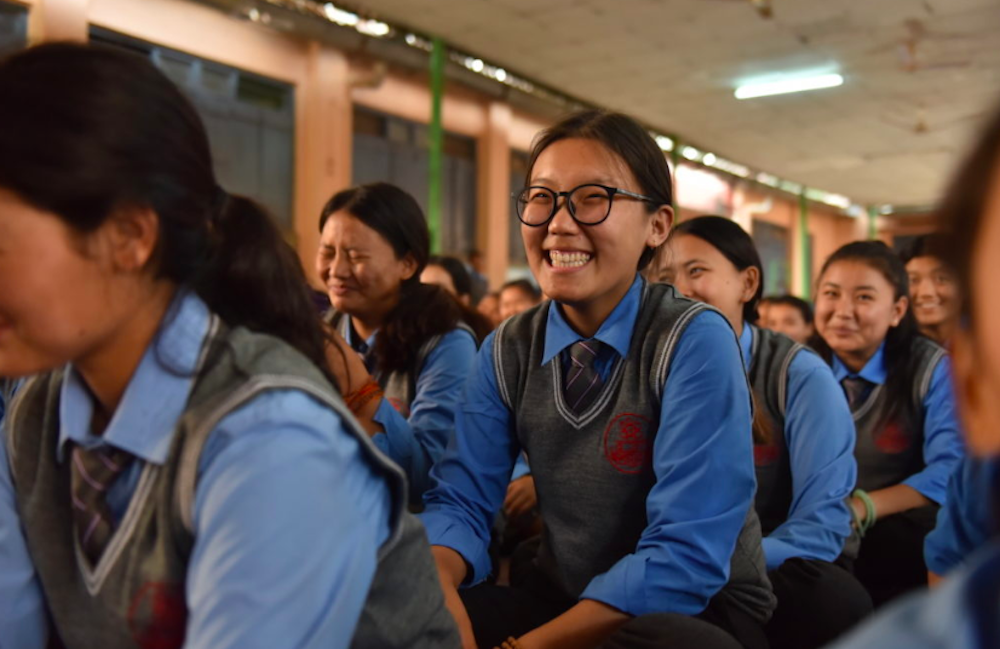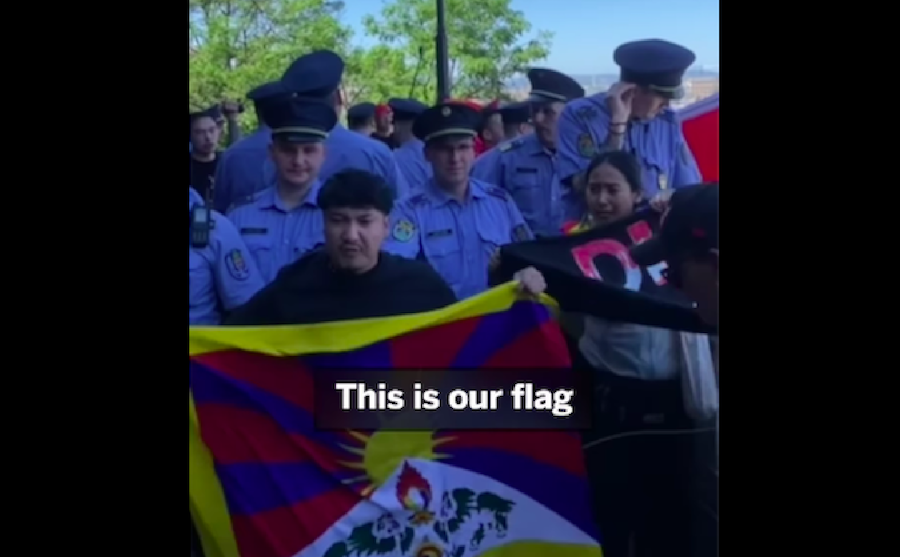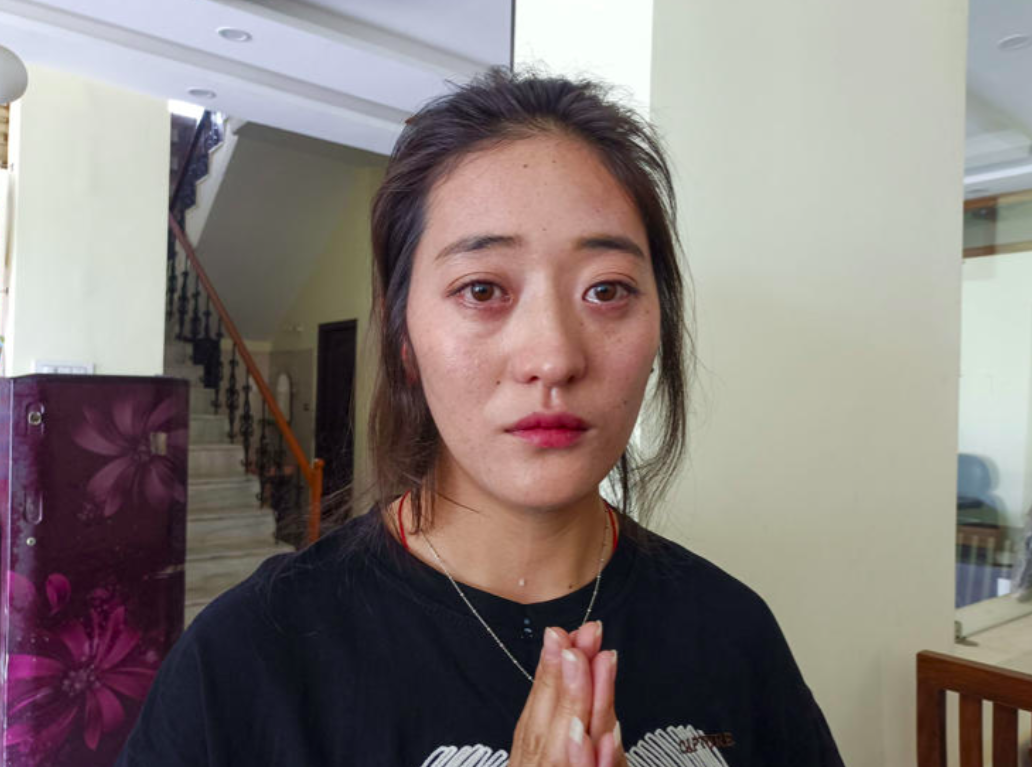By Tenzin Nyidon
DHARAMSHALA, Jan. 12: Khadhok Collective, a group of Tibetan artists known for their expression through art, inaugurated their second exhibition titled, “Thin Line” at The Other Space cafe on Jogiwara road here on Tuesday. The display from three Tibetan artists showcase a compelling amalgamation of traditional and contemporary art forms.
Attended by art aficionados and local community members, the event aimed to honour the artworks of late Jigme Choedak, fondly remembered as JC as well as two other emerging artists, Tashi Nyima and Tenzin Melak. During the exhibition, attendees engaged in conversations with the artists, seeking deeper insights into the inspirations and narratives behind their artwork. The interactions allowed the two emerging artists to articulate their struggles within the community, emphasising the limitations imposed by a lack of diversity and inclusivity in the art scene. They shared poignant narratives of having to forge their unique paths to gain recognition, while also countering societal norms and expectations in the artistic landscape.
Both artists highlighted the prevailing challenges of breaking away from conventional norms and expectations ingrained within the community. The dialogue underscored the artists’ efforts to challenge and dismantle stereotypes surrounding art as a profession within the Tibetan community. Both Tashi and Melak expressed their dedication to redefining the perception of art, striving to portray it not just as a vocation but as a respected career choice.
During the interaction, attendees gained profound insights into the nuanced nature of artistic expression, balancing both freedom and constraints inherent in their creative processes. As the artists shared their personal experiences and creative journeys, they shed light on the duality of freedom and limitations that they navigate. They emphasised how their art serves as a medium to communicate their emotions, thoughts, and perspectives authentically. However, an interesting aspect emerged during their discussion – the distinction between their expressions in public spaces versus their private artistic sanctuaries.
In conversation with Phayul, the duo voiced their excitement for the second series of Khadhok’s Collective’s art exhibition, that is intended to honour and celebrate Tibetan artists’ artworks. They conveyed their intentions to conduct workshops in schools, aiming to raise awareness about Tibetan artistry among the youth.
Moreover, the duo hoped that Khadhok Collective can serve as a launching pad for emerging talents within the Tibetan art scene. Their vision entails fostering an environment that encourages artistic growth and nurture new talents, create opportunities for artists to showcase their creativity.
The Khadhok Collective made its debut with its inaugural exhibition on August 25 last year, marking a poignant occasion dedicated to honouring the life and artistic legacy of the late Jigme Choedak.











One Response
We need to have interactions and criticism between Tibetan artists living all around the globe. Artists from USA, Europe, Tibet, Nepal, India should critique each other’s work and provide both constructive and destructive criticism. But lets remember that lots of Tibetan artists and singers are frauds or imposters and there are real ones as well. We gotta be honest.
But art should not be mixed with politics. Politics is about manipulation to gain power to influence society to keep power within a select exclusive group, but art is about expression of emotions and thoughts and ideas by an individual.
Gonkar Gyatso is a good artist, if not great, and he swaps his time between Chendu in Tibet and New York and London. But his art is largely ignored by Tibetan diaspora, not good.
Art is like going to mental gym, while excercise is like going to physical gym. Both are needed for healthy human life. When emotions are not expressed, but suppressed, by a community, the members suffer from psychological suffocation. Psychological suffocation leads to reckless abandon, for the subject no longer sees any hope of illumination or awareness. Society degenerates, as individuals who form society starts to rot.
There should be cultural exchange between artists from Lhasa, Tibet and from Dhasa, India and exhibit their works. India – Pakistan is culturally extremely close despite their wars, but Tibet-China cultural exchange is nearly nil. What do we get by blocking ourselves from exposure?
USA trained 6r4r Khampas to fight the chinese military. But the ratio is 1: 1000. How can 1 Tibetan army kill 1,000 Chinese army, even if the guns and weapons are of same grade? Sheer volume would have defeated us in a blink of an eye. We were gaslighted by America. Their support might have been just a joke.
Tibet is suppressed by both West and China. Only India is helping us express ourselves on the basis of our advanced science of the mind that originated from Nalanda. Some friends are not real friends, they are enemies pretending to be friends in our art and literature. ‘ They dont’ care about us’ as Michael Jackson sang for oppressed blacks.
since it is ‘ mitse chik’ or ‘ just one life’ , there is no time for any niceties. We better claim what we are owed, and there is no time for pretensions or affections, for we are victims and for we have nothing to lose. Pretenders are fooling our foolish Tibetan people who believe in compassion, kindness.
large sections of people in the west suffer from mental conditions like psychosis, neurosis, delusion, fear. We tibetans can help them like a father showing path to clueless, confused children. That’s true kindness.